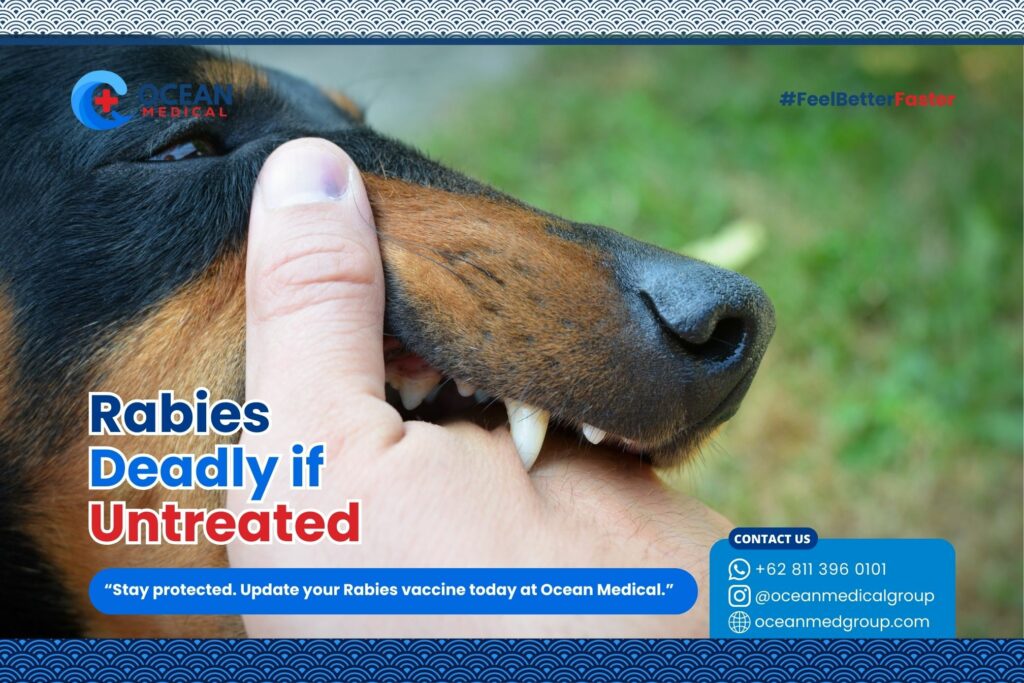
Rabies
Cause
- Rabies is caused by the Rabies virus, a member of the Lyssavirus genus.
- The virus specifically attacks the brain and nervous system, leading to severe neurological damage.
How It Spreads
- Rabies is transmitted through the saliva of infected animals, most often via:
- Bites
- Scratches
- Licking of open wounds or mucous membranes (eyes, mouth).
- Common animal carriers include:
- Dogs (the most frequent source in Asia and Africa)
- Cats
- Monkeys (especially in tourist areas)
- Bats
Symptoms
Early stage (1–3 days after onset):
- Fever, headache, and fatigue
- Pain or unusual sensations (tingling, itching) at the site of the bite
Progressive stage:
- Anxiety, confusion, and agitation
- Difficulty swallowing and speaking
- Excessive salivation and muscle spasms
- Fear of water (hydrophobia) and sometimes fear of air (aerophobia)
Final stage:
- Paralysis
- Coma
- Death (usually within days of symptom onset)
Why It’s Dangerous
- Fatality rate: Once symptoms appear, rabies is almost always fatal.
- Global risk: Tens of thousands of people die from rabies every year, mostly in Asia and Africa.
- Indonesia (including Lombok): Considered a high-risk area due to stray dogs, cats, and frequent human–animal interaction, especially in rural and tourist areas.
Prevention
- Pre-exposure vaccination: Recommended for travelers, outdoor workers, animal handlers, and children living in or visiting high-risk areas.
- Immediate wound care: Wash bites or scratches thoroughly with soap and running water for at least 15 minutes.
- Post-exposure prophylaxis (PEP): A series of rabies vaccines (and rabies immunoglobulin, if needed) must be started as soon as possible after exposure.
- Avoidance: Stay away from stray or wild animals; do not attempt to feed or touch them.
Treatment
- No cure exists once symptoms develop. Treatment is supportive only and rarely successful.
- After exposure:
- Immediate wound cleaning with soap and water
- Rabies vaccination series (PEP)
- Rabies immunoglobulin (RIG) if the exposure is high-risk or severe
In Short
Rabies is a 100% preventable but 100% fatal disease if left untreated.
The key is prevention through vaccination and rapid action after exposure.
Vaccination before travel, or immediately after an animal bite, saves lives.

